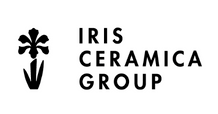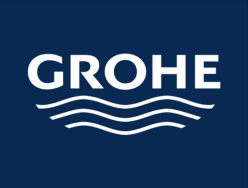The Architecture Drawing Prize (TADP) celebrates and showcases the art and skill of architectural drawing in multiple formats. Established in 2017, the Prize has become a leading international platform for discourse around architectural drawing with winning entries exhibited at Sir John Soane's Museum in London.
About the prize
The Architecture Drawing Prize is collaboration between Make Architects, Sir John Soane's Museum, and World Architecture Festival.
Entrants have the chance to have their work displayed at the world-renowned Sir John Soane's Museum in early 2026. Plus, winners will gain international recognition at the World Architecture Festival 2025 in Miami.
In recognition of the evolving nature of architectural drawing, including the growing influence of AI tools and techniques, this year’s awards were judged on an overall basis rather than in category silos.
There are multiple winners and a special prize for hand-drawing to mark the initial inspiration for the awards. An overall winner will be announced at a preview event taking place at the Sir John Soane's Museum in January 2026.
Entries are now closed for the 2025 competition.
2025 winners
Click on each image to enlarge
This project reimagines decommissioned naval components into an experimental hydrofoil hub that fuses maritime heritage with innovation, exploring how humans can reclaim presence and purpose amid machine-dominated environments.
This project examines the tension between top-down and bottom-up design by using typological and diagrammatic reasoning to explore how adaptive architectural systems can quietly yet dynamically shape and respond to evolving urban conditions.
This project proposes an architectural response to the 2004 Morecambe Bay tragedy—a memorial, RNLI station, and survival training pool in Blackpool—that educates coastal communities, commemorates lost lives, and explores resilience through emotionally and temporally driven design.
Almost Forgotten is an architectural exploration that transforms fragmented materials and intuitive making into a suspended, fractured structure, using space, light, and material to evoke memory, loss, and belonging.
This drawing presents the Savannah Train Station as a spatial narrative that decodes ecological, historical, and infrastructural systems, using design to reveal the city’s evolving social, environmental, and economic dynamics while proposing adaptive, resilient urban infrastructure.
The Tales of Liminality reinterprets Venice through a 12-panel screen that weaves the city’s silk heritage with transnational histories, challenging Eurocentric urban narratives and highlighting the fluid, intersecting cultural influences along the Silk Roads.
This diptych critiques architecture’s entanglement with social media, AI, and ideological posturing, using contrasting methods to expose how critical theories and stylistic rivalries can become self-serving myths rather than rigorous discourse.
Living Soil is a design research project that creates a visually engaging representation of soil biodiversity, capturing the complex interactions of an ecosystem to inspire awareness, imagination, and appreciation for an often-invisible and endangered environment.
The reimagined Swan Hunter fabrication shed transforms a historic dry dock into a collaborative, educational space that fosters innovation in manufacturing, builds on the region’s industrial heritage, and promotes community engagement through hands-on learning and systemic problem-solving.
Hackney Power Plant repurposes a former coal-fired power station into an educational and research hub for sustainable, carbon-sequestering materials and products, embodying a circular economy to address past environmental damage and the climate emergency.
This axonometric diptych of Mary Miss's 'Perimeters/Pavilions/Decoys' shows the project from two vantage points, the centre of the sun and the centre of the earth, serving as an analytical tool, a means to survey and test what it means to perceive diametrically opposing positions simultaneously.
The exploded perspective of the São Paulo State Art Gallery illustrates both the historic and modern interventions, highlighting the museum’s spatial relationships, public activities, and interactions with art and the city, using a playful approach to engage viewers of all ages.
Super-Mega-Ruralistic is a speculative design project that transforms industrial landscapes into elevated, adaptive agricultural systems integrating ecological restoration, climate resilience, and energy-responsive crop modulation, visualized through a hybrid triptych that conveys both structure and atmospheric light.
This project envisions a resilient, inhabitable landscape in Bhutan that addresses climate-induced water crises by securing water, food, energy, and cultural resources while protecting downstream ecosystems, depicted through floating villages and a weaving promenade.
The Shilpogram Village proposal reimagines a flood-prone Bangladeshi community through socially informed, culturally sensitive, and environmentally sustainable interventions that elevate traditional livelihoods, craftsmanship, and everyday practices to foster resilience, equity, and adaptive living.
The 2025 judges
Ben Langlands and Nikki Bell, Artists
Federica Minozzi, Group CEO, Iris Ceramica Group
Ken Shuttleworth, Founder, Make Architects
Lily Jencks, Founder, Lily Jencks Studio
Louise Stewart, Head of Exhibitions, Sir John Soane’s Museum
Narinder Sagoo, Head of Design Communications, Foster + Partners
Paul Finch, WAF Programme Director and chair of the jury
Entry guidelines
Entry requirements
In recognition of the changing nature of drawing production — including the growing influence of AI tools and techniques — this year’s awards will be judged on an overall basis rather than in category silos.
What we therefore require:
- Title of entry
- Name of entrant
- Project description outlining the intention/context of the drawing (up to 150 words)
- Means/method of production (to include details of digital programmes used, and how AI has been deployed if relevant)
- Dimensions of the original We welcome drawings of every description.
We welcome drawings of every description.
Final entry deadline: 1 October 2025 (submissions are now closed for 2025)
Standard entry fee: £99
Entry fee for under 30's and students: £49
Who can enter?
The Prize is open to all architects, designers and students.
How is the Prize judged?
Judges will meet in person during October 2025 to review the drawings.
The judges will be looking for:
- Technical skill
- Success in conveying a design idea, be it a general concept or a specific proposal
- Originality of approach
- Quality of drawing irrespective of the project it may represent (built, unbuilt or purely conceptual)
- Extent to which the drawing makes a proposition about architecture, rather than simply recording it
Am I required to submit the original artwork?
To enter the Prize you need to upload an image of your drawing to the online entry system. You do not need to supply the original artwork.
For the overall winner and other winners
All winning entries will be displayed at the Sir John Soane's Museum dedicated Drawing Prize exhibition in London. Selected winners may be displayed at the World Architecture Festival 2025 in Miami this November. Dependent on the type of drawing, winners may be required to send their original drawing.
The 2023 webinar
The 2023 winners
The 2022 winners
Hybrid
Overall and Hybrid Category Winner
Fitzroy Food Institute
Samuel Wen and Michael Ren
'Fitzroy Food Institute stands out for its well-considered and subtle use of colour. It’s a very accessible drawing looking over a shared meal at a table; yet it is full of architectural interest featuring not only a plan, but sections and elevations as well as detail. A conceptually original and genuinely delightful entry.'Ken Shuttleworth, founder, Make Architects
Hand-Drawn Category Winner
The Spirit of Mountain
Weicheng Ye
‘This is a drawing of great delicacy which highlights the difference between a tall-building aesthetic, and the possibility of disrupting it in a creative way via the insertion of nature as artistic intervention. A very worthy winner.’
Paul Finch, Director, WAF
Digital
Digital Category Winner
The Wall
Anton Markus Pasing
'The Wall fills the view with a golden elevation: expansive and richly complex, it appears both vertical and horizontal, before us and below us, a terrain of construction and sedimented accumulation. It is not a border or a barrier, it is a space itself, a place of habitation, a record of social interaction. The wall is like time, it is history in the making.'
Artists Ben Langlands and Nikki Bell
Archive
Drawing prize archive
2021 winners and shortlist
Take a look at the 2021 winners and shortlist drawings across its three categories: Hand-drawn, Digital and Hybrid.View the 2020 virtual exhibition
During the pandemic, the usual exhibition of drawings couldn’t take place at the Sir John Soane’s Museum. Make Architects, therefore, produced a virtual gallery of all the previous winners to be enjoyed by audiences at any time all across the world.
Media
TADP Instagram
Follow The Architecture Drawing Prize Instagram account and join in the conversation.
TADP blog
Read the latest blog posts from the Architecture Drawing Prize, created by Make.
TADP Sponsor

TADP Curators



Curator
TADP Media partners
TADP Media Partners

Archdaily
Founder Partner







